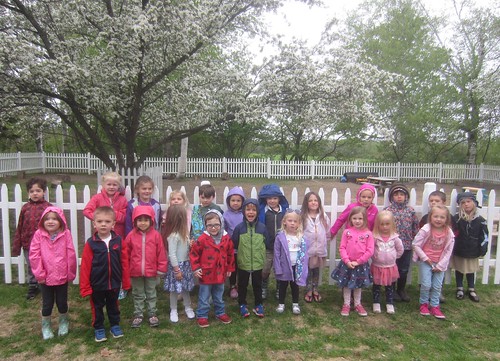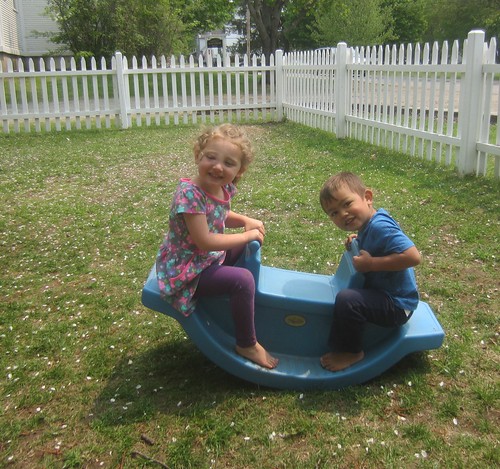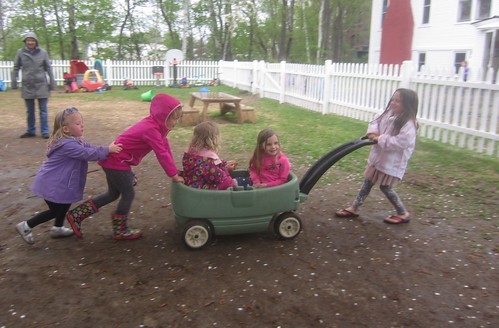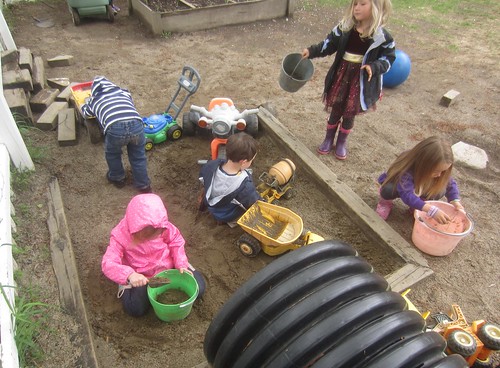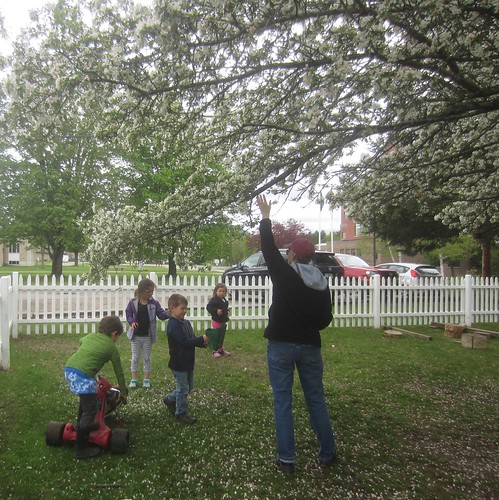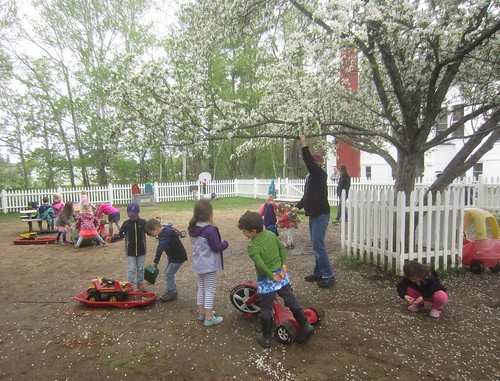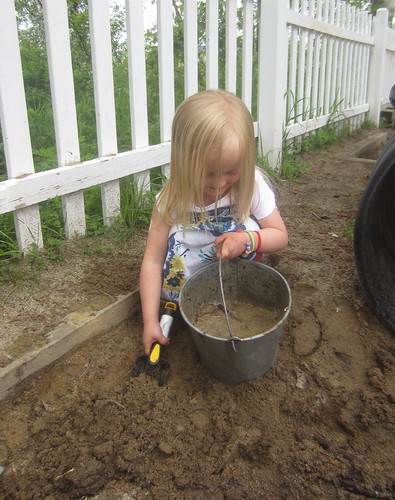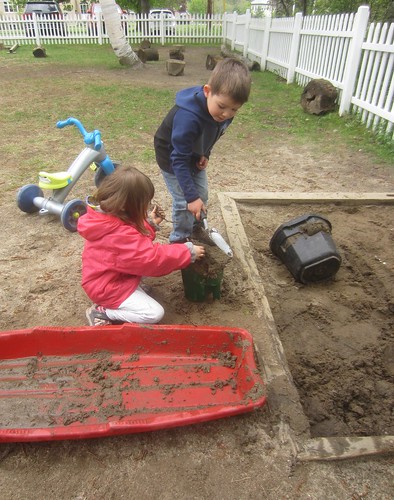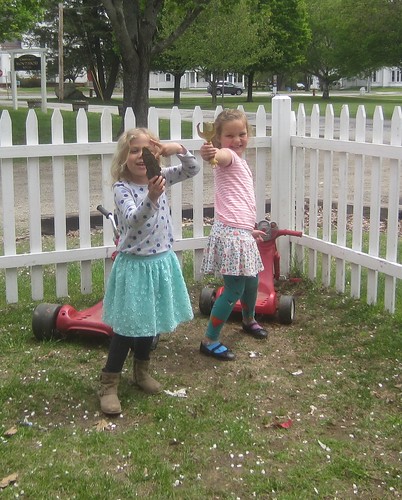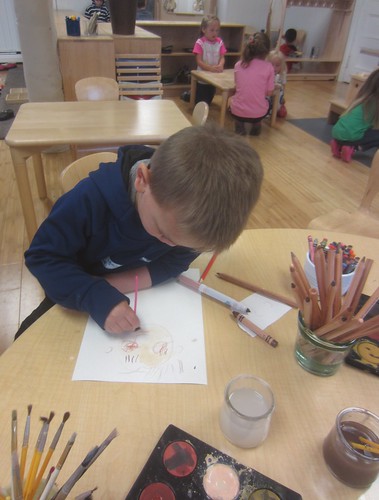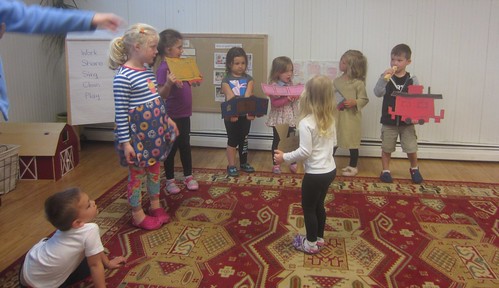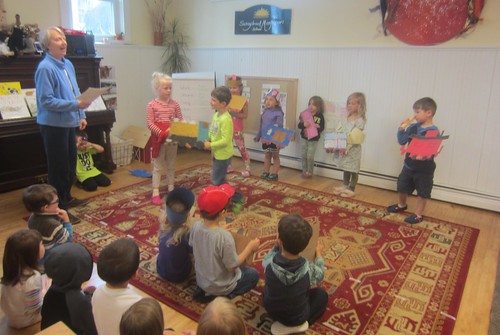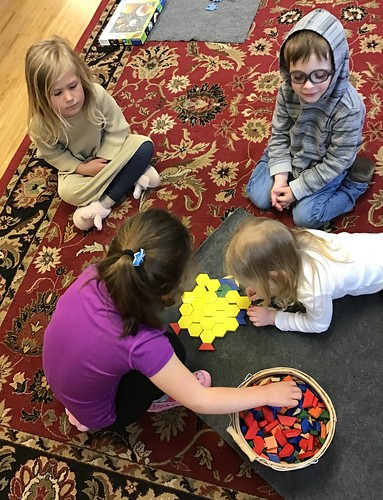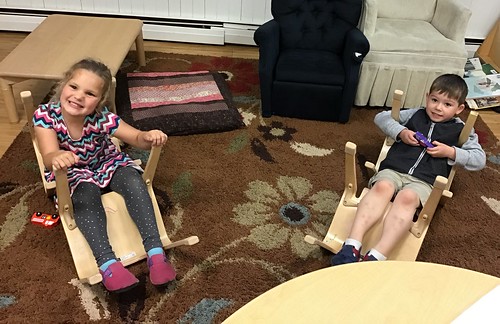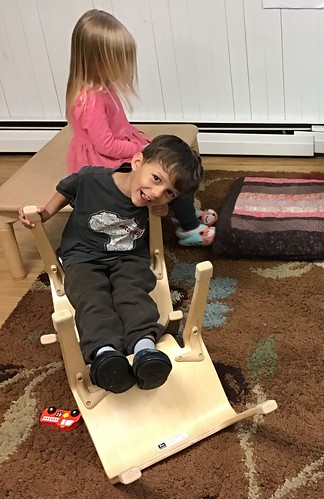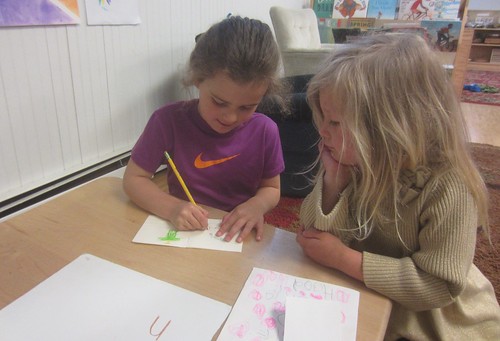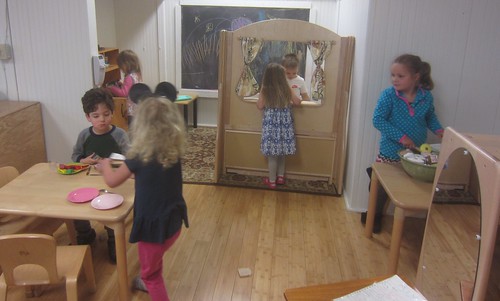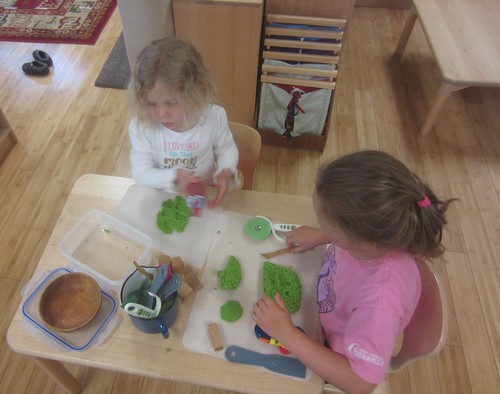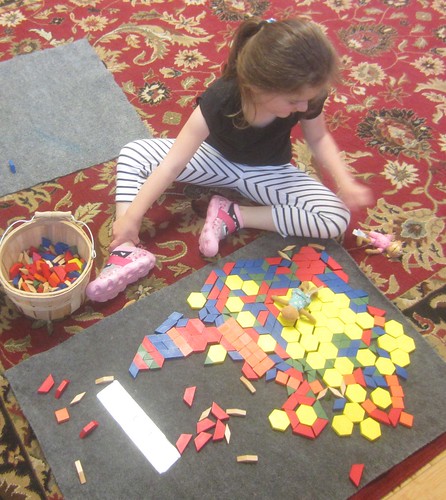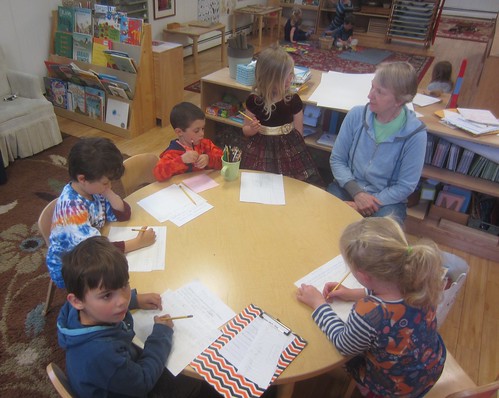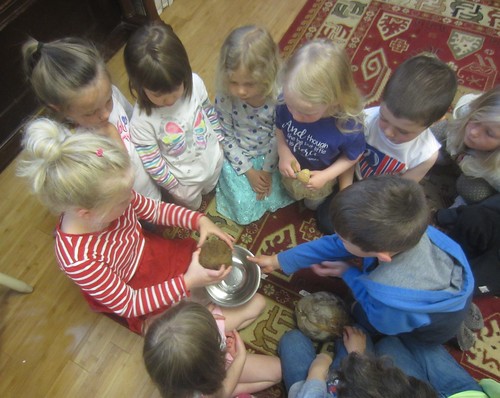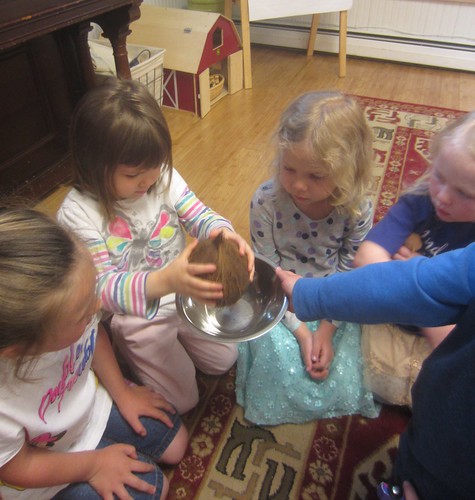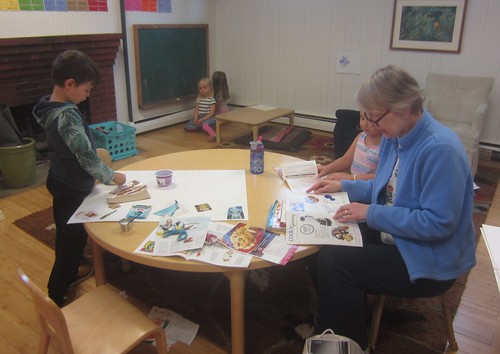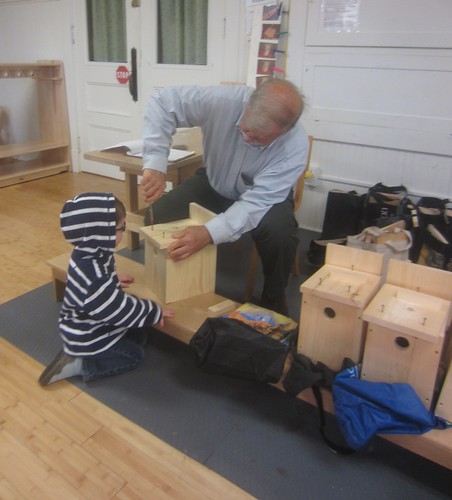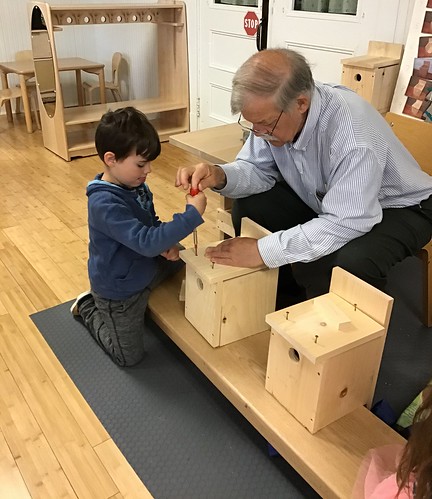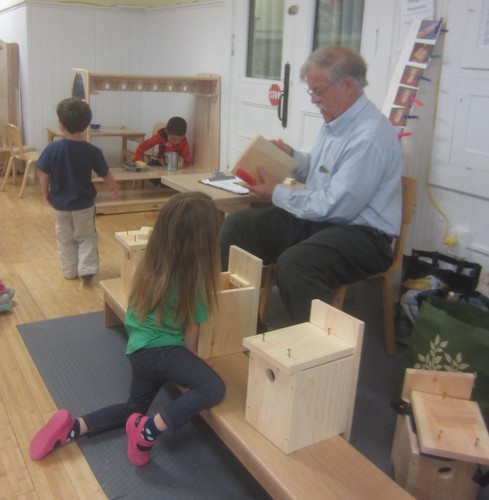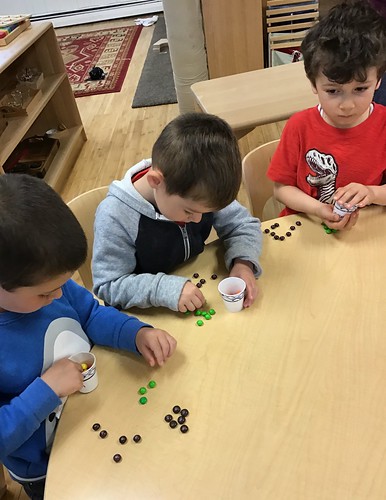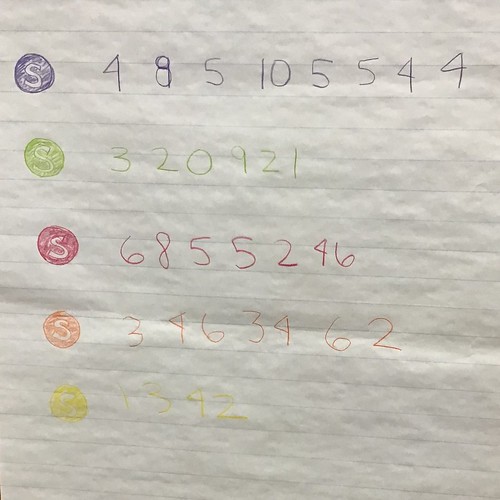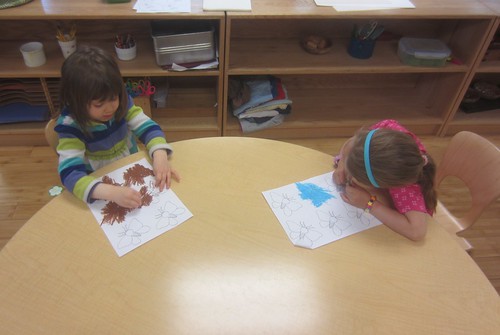Children were speeding all around as quickly as they could, playing chase, scooting bikes, pulling wagons, pedaling, pushing trucks, and hopping on balls. It was very busy! The crab apple tree finally blossomed, so the petals were collected for potions and stews and other concoctions. Susan shook the branches while children stood underneath for a petal shower. The regular rain showers have made water play an almost daily option. It is scooped out of puddles and collected in buckets and sleds and transferred for a variety of uses.
Our theme of the week has been knowing and appreciating ourselves. We read and discussed many stories and their themes and messages, including The Paper Bag Princess, Whoever You Are, Dandilion, Ferdinand, Can You Catch a Mermaid?, The Ant and the Elephant, and The Lion and the Mouse. We discussed being ourselves and not worrying about what others think or expect, being kind, making poor choices and how to amend for them, being grateful, recognizing our value, and being persistent.
Each child made an end of year self-portrait, which will be displayed at the end of year performance next to their beginning of the year self-portraits.
We continued to rehearse our plays and songs for the end of year performance. The audience was asked to provide feedback about things that went well during The Little Engine That Could, and there were some very insightful comments shared, such as how the performers remembered to face the audience, the train stayed together, and some of the children spoke loudly and clearly.
The children worked with Mr. Bond to attach the tops of their bird houses, the final piece. They were all sent home to hang for a bird family to visit and nest in. We are so tremendously grateful to Mr. Bond, who volunteered all of his time and expertise to come in every Wednesday to teach the children and work with them to create several wonderful projects. Mr. Bond not only volunteered his time, but also planned and designed all the projects, and purchased and prepared all materials to construct them. We cannot thank him enough for his generosity!
Friday students continued their study of birds with a lesson and experiments on camouflage. We watched a video explaining how animals use camouflage, and a second about camouflage insects. We did an experiment with M&M’s and skittles. There were 5 stations set up, each with a plate of same colored M&M’s and skittles. The children used their “beaks” to grab up only the S “insects” that were camouflaged among the same colored Ms. After each team spent 15 seconds at each station, we sorted, counted, and compared how many of each color was collected. They discovered that the highest number collected was purple, which they determined was due to the purple Ss being hidden in brown Ms. The lowest number collected was yellow, which they determined was because the yellow colors matched exactly (some of the other colors were a shade lighter or darker) and the letters on them were white, which were more noticeable on the dark colors, and less visible on the yellow. Later in the morning some of the children colored some moths, which they then hid around the classroom on items where they would be camouflaged, and the other students hunted for and “ate” them.

